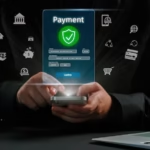Introduction
Shared (P2P) advancing stages have changed the financial P2P lending business by clearing out the fintech loans necessity for standard banks in the credit cycle.These stages interface borrowers straightforwardly with loan specialists, giving a more adaptable, proficient, and frequently financially savvy method for getting to credit. As we look toward 2025, P2P loaning keeps on developing, molded by mechanical headways, administrative changes, and changes in buyer inclinations. This article researches the examples, hardships, and future perspective of P2P crediting in the high level time,
What Is Peer-to-Peer Lending
P2P advancing stages go about as online business communities where individuals or associations can get cash clearly from others. Not at all like conventional bank credits, which include middle people and broad endorsement processes, P2P stages smooth out loaning by interfacing borrowers and moneylenders through a mechanized cycle. Stages like LendingClub, Succeed, and Financing Circle have promoted this model, offering advantages, for example, aggressive loan fees for borrowers and appealing returns for banks. The advancement of fintech and blockchain development has also worked P2P lending on the straightforwardness and security of these stages, making P2P crediting a connecting with choice as opposed to standard home loans.
The Rise of Fintech in P2P Lending
The combination of monetary innovation (fintech) into P2P loaning stages has been a distinct advantage. High level calculations, AI, and man-made brainpower (computer based intelligence) are currently used to evaluate financial soundness, decreasing dependence on customary FICO assessments. In 2025, fintech loans are supposed to make P2P stages significantly more proficient, with quicker credit endorsements and improved risk the executives. Furthermore, portable first stages and easy to understand interfaces take special care of a more extensive crowd, guaranteeing openness for both educated clients and those new to computerized finance.
Blockchain and Smart Contracts: Transforming P2P Lending
Blockchain advancement has introduced one more level of straightforwardness and security to P2P crediting. By utilizing brilliant agreements, P2P stages can robotize advance arrangements, guaranteeing that terms are met before reserves are dispensed. Blockchain additionally empowers permanent exchange records, decreasing P2P lending misrepresentation and building trust among borrowers and banks. In 2025, blockchain-based P2P loaning is supposed to develop fundamentally, with stages like Salt and Aave spearheading decentralized loaning environments. This development lines up with the more extensive shift toward decentralized finance (DeFi), where conventional monetary administrations are being reconsidered on blockchain networks.
Benefits of P2P Lending for Borrowers
For borrowers, P2P advancing offers a couple of advantages over standard credits. The application interaction is commonly quicker, with negligible administrative work and speedier payment of assets. Borrowers can frequently get advances at lower loan fees, especially in the event that they have a decent credit profile. Also, P2P stages give more adaptable terms, permitting fintech loans borrowers to fit reimbursement timetables to their requirements. In 2025, the cutthroat scene of P2P loaning is supposed to additional drive down costs and further develop administrations, making it an alluring choice for individual credits, business subsidizing, and obligation union.
Advantages for Lenders: Earning Passive Income
Loan specialists on P2P stages benefit from better yields contrasted with conventional investment accounts or fixed stores. By loaning straightforwardly to borrowers, moneylenders sidestep middle people, catching a bigger portion of the premium pay. Numerous stages offer instruments to expand ventures across different borrowers, relieving risk and guaranteeing consistent returns. As the P2P market develops in 2025, creative elements like mechanized reinvestment and continuous examination will engage banks to settle on additional educated choices and expand their profit potential.
Challenges and Risks in P2P Lending
Regardless of its benefits, P2P loaning accompanies difficulties and dangers. Default rates can be higher than in conventional loaning, especially for stages that take care of high-risk borrowers. Financial slumps or market instability can intensify these dangers, prompting expected misfortunes for banks. Also, the absence P2P lendingof extensive guideline in certain districts makes vulnerability for stage administrators and clients. In 2025, addressing these difficulties will be basic to keeping up with trust and solidness in the P2P loaning market. Endeavors to present normalized guidelines and powerful gamble evaluation models are supposed to assume a key part in moderating these worries.

Regulatory Trends Shaping the Future of P2P Lending
Guideline is a huge consider the development and maintainability of P2P loaning stages. Legislatures overall are perceiving the significance of finding some kind of harmony among development and customer insurance. In 2025, more nations are supposed to present administrative structures that characterize functional rules for P2P stages, including prerequisites for straightforwardness, information security, and borrower-moneylender freedoms.These activities hope to diminish deception, work on monetary benefactor assurance, and assurance fair practices across the business. Amazing models consolidate the Financial Lead Authority (FCA) in the UK and creating methodologies in the US and Asia-Pacific regions
The Role of P2P Lending in Financial Inclusion
One of the most groundbreaking parts of P2P loaning is advancing monetary inclusion potential. By interfacing loan specialists with borrowers who might need admittance to conventional financial administrations, P2P stages engage underserved networks. Private companies, specialists, and people with restricted records as a consumer can get subsidizing through elective credit evaluation models. In 2025, P2P loaning is supposed to assume a crucial part in spanning monetary holes, especially in creating economies. Organizations with neighborhood fintech organizations and the mix of versatile innovation will additionally extend the scope of P2P administrations, carrying monetary open doors to millions.
The Future of P2P Lending in 2025 and Beyond
As we move further into 2025, P2P loaning stages are set to reclassify the worldwide monetary scene. Propels P2P lending in innovation, combined with expanding shopper interest for elective monetary administrations, will drive advancement and rivalry in the area. The incorporation of man-made intelligence, blockchain, and large information investigation will improve the effectiveness and dependability of these stages. In the interim, developing administrative lucidity will give a steady groundwork to extension. With its capacity to democratize admittance to credit and venture open doors, P2P loaning is ready to turn into a foundation representing things to come monetary environment.
Personalized Lending: Tailoring Financial Solutions
In 2025, distributed loaning stages are supposed to embrace personalization at an extraordinary level. By utilizing man-made brainpower (artificial intelligence) and information examination, these stages can offer custom-made credit items in view of individual borrower profiles. For instance, computer based intelligence calculations can investigate spending designs, reimbursement narratives, and chance variables to make custom credit terms that line up with the borrower’s monetary objectives. This approach further develops borrower fulfillment as well as assists loan specialists with pursuing more educated choices. Customized loaning can possibly rethink the client experience, offering an upper hand to stages that take on this imaginative model.
P2P Lending and Sustainability: Financing Green Projects
As maintainability becomes the dominant focal point in worldwide needs, P2P loaning stages are progressively being utilized to back green undertakings. Borrowers looking for assets for sustainable power establishments, eco-accommodating new companies, or feasible local area drives can interface straightforwardly with similar financial backers. Stages, for example, Ternary and Lendahand have previously exhibited outcome in financing sun powered energy projects in underserved fintech loans districts. In 2025, this pattern is supposed to develop, driven by expanded ecological mindfulness and interest for reasonable venture valuable open doors. By adjusting monetary development to ecological obligation, P2P loaning can contribute essentially to building a greener future.

Cross-Border P2P Lending: Expanding Opportunities
The globalization of monetary administrations is opening new roads for cross-line P2P loaning. In 2025, stages are supposed to take care of worldwide borrowers and moneylenders, separating geological boundaries to get to credit. Blockchain innovation and computerized monetary forms will assume a vital part in working alternative financing with consistent, secure cross-line exchanges. This extension benefits the two players: moneylenders gain openness to different business sectors, while borrowers in emerging nations get to much-required subsidizing. Notwithstanding, cross-line P2P loaning likewise requires hearty administrative systems to address difficulties, for example, money dangers, consistence, and misrepresentation avoidance.
Educating the Masses: Increasing Awareness of P2P Lending
One of the vital difficulties for P2P loaning in 2025 is expanding public mindfulness and comprehension of its advantages and dangers. Numerous potential clients actually need information about how these stages work or the open doors they offer. To overcome this issue, P2P stages are putting resources into instructive missions, utilizing sites, online classes, and intelligent apparatuses fintech loans to illuminate clients. By demystifying the loaning system and featuring examples of overcoming adversity, stages can fabricate trust and draw in a bigger crowd. Over the long haul, expanded mindfulness will add to the standard reception of P2P loaning, making it a staple of present day monetary environments.
The Integration of AI Chatbots for Seamless User Experience
In 2025, the joining of computer based intelligence controlled chatbots into P2P loaning stages is set to improve client experience fundamentally. These chatbots can direct clients through the advance application process, answer habitually got clarification on some pressing issues, and give constant updates on credit situations with. By offering all day, every day support, chatbots make the stages more open and easy to use, especially for first-time borrowers and loan specialists. Furthermore, artificial intelligence driven client support lessens functional expenses for stages, permitting fintech loans them to put resources into different regions like gamble evaluation and item development. This innovation guarantees a smoother, quicker, and seriously captivating experience for all members in the P2P loaning environment.
Conclusion
Shared loaning has proactively changed the manner in which individuals acquire and contribute, and its impact is simply expected to fill before very long. By utilizing innovation to make a more comprehensive and productive monetary framework, P2P stages are enabling people and organizations the same. As we look toward 2025, the proceeded with development of P2P loaning vows to reshape customary alternative financing monetary models, making credit more open, reasonable, and straightforward for everybody. Whether you are a borrower looking for adaptable subsidizing or a moneylender investigating new speculation potential open doors, P2P loaning addresses a dynamic and promising wilderness in current money.


